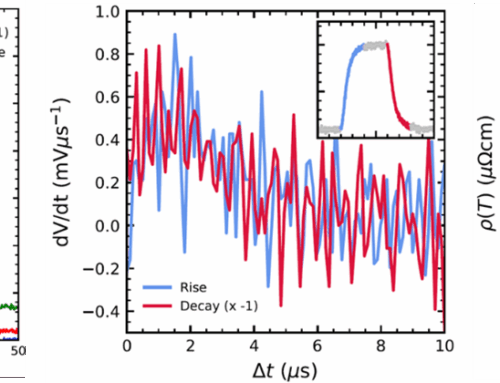Electrons are one of the fundamental constituents of solids, responsible for most of the important phenomena and applications in condensed matter physics. Therefore, understanding, controlling and manipulating electronic properties is still one of the great challenges of condensed matter research. An ideal testbed for this endeavour are high-quality two-dimensional electron systems (2DESs) subject to high magnetic fields. The competition between kinetic energy and the electron-electron action drives the 2DES through different gaseous, liquid and solid phases, which can be controlled by temperature and magnetic field.
Researchers from the RIKEN Center for Emergent Matter Science and the University of Tokyo have now observed and explained all these phases in the 2DES of MgZnO/ZnO heterojunction with exceptional quality. In collaboration with HFML – EMFL scientists they have performed state-of-the-art electronic magneto-transport experiments at very low temperatures down to 60 mK and high magnetic fields up to 33 T, which allowed the direct observation of a sequence of several liquid-solid transitions in a 2DES.
More specifically, as illustrated in the figure below, they have observed the competition between two competing correlated phases in a 2DES over an unprecedentedly large parameter range: a Laughlin liquid (Fig.b, leading to a fractional quantum Hall effect of so-called composite fermions) and a Wigner solid (Fig.c). This is without a doubt a significant leap forward in our understanding of interaction-driven electronic phases in solids. More generally, the knowledge gained with this research can be useful for future technological developments on innovative correlation-based quantum computation devices.

The different phases of 2D electrons in MnZnO/ZnO
(Courtesy of Mari Ishida, RIKEN Center for Emergent Matter Science, Japan).
a) Free, weekly interacting, electron gas at zero magnetic field. The quantisation of these electrons into Landau levels leads to the observation of an integer quantum Hall effect.
b) Composite fermion (CF) gas consisting of electrons in high magnetic fields with two magnetic flux quanta attached to them. These particles are responsible for the observation of a fractional quantum Hall effect described by a Laughlin liquid.
c) Wigner solid of electrons in high magnetic fields. The competition of kinetic and potential energy makes it favorable for electrons to arrange in a solid phase, a so-called Wigner solid, rather than a free electron gas.
d) Coexistence and of a CF liquid and a Wigner solid in the quantum limit of 2D electrons in MnZnO/ZnO.
Related publication:
Composite fermion liquid to Wigner solid transition in the lowest Landau level of zinc oxide,D. Maryenko, A. McCollam, J. Falson, Y. Kozuka, J. Bruin, U. Zeitler & M. Kawasaki, Nature Communications 9, 4356 (2018)
DOI: https://doi.org/10.1038/s41467-018-06834-6
Contact: Uli Zeitler






